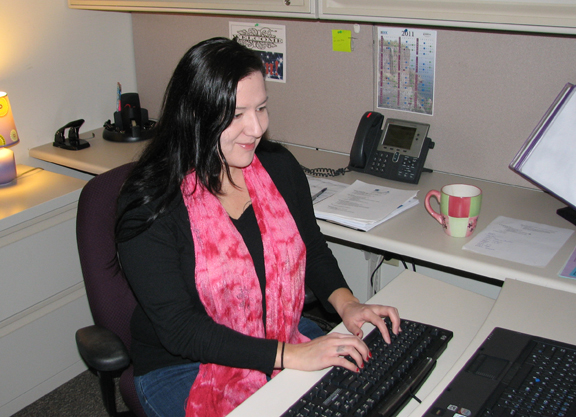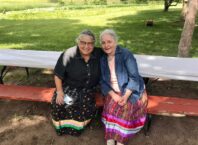 In the Twin Cities metropolitan area, a disproportionate number of Native families live in low income housing. In particular, the Phillips neighborhood in Minneapolis is home to a group of Native mothers, fathers, and concerned individuals who have linked substandard rental and housing situations to health problems within the community. Problems such as mold, lead paint, and even arsenic continue to plague the residents of the neighborhood, even decades after the banning of lead paint for commercial use and the identification of arsenic as a cancer-causing agent.
In the Twin Cities metropolitan area, a disproportionate number of Native families live in low income housing. In particular, the Phillips neighborhood in Minneapolis is home to a group of Native mothers, fathers, and concerned individuals who have linked substandard rental and housing situations to health problems within the community. Problems such as mold, lead paint, and even arsenic continue to plague the residents of the neighborhood, even decades after the banning of lead paint for commercial use and the identification of arsenic as a cancer-causing agent.
Healthy Homes Healthy Kids is a program created to fight against housing disparity. Funded by The Blue Cross Blue Shield Foundation of Minnesota, the program encourages community members to come together to address the issue and find reasonable solutions to the problems they face.
Lynn Braveheart is the Community Organizer and Outreach Coordinator for the program. For the past three years, she has worked closely with community leaders, parents, city officials and even state representatives to make the case for improved housing for Native children.
Braveheart says that what most concerns the parents and officials who have noticed this trend is that the children who live in homes that contain environmental toxins are more likely than others to suffer from health complications. Those same toxins place children at risk for future learning deficiencies as well as life-threatening illnesses such as cancer.
To counteract the environmental dangers these Native children are exposed to daily, Preventing Harm Minnesota, a non-profit organization dedicated to reducing the exposure of children to dangerous chemicals and elements, paired up with concerned community members, as well as the University of Minnesota and the Native American Community Clinic to create Healthy Homes Healthy Kids, a program devoted to identifying the underlying problems that result in substandard living conditions for children in the community.
Braveheart said, "Essentially we’re looking for the economic and social determinants of health, or you could say the root causes of the problems that affect homes in the Phillips neighborhood and in the wider Metropolitan area. For example South Minneapolis has many socioeconomic and environmental problems that overlap. Its poverty level, its education system; the poorly built housing, transportation, and traffic. It all adds up to affect children negatively. Whether children are outside or in their own homes, there are harmful elements are all around them in an urban setting. In some of the older buildings, the possibility exists that children could be exposed to lead paint or lead dust, which is a neurotoxin that affects IQ."
To work towards addressing the many needs of low-income housing, Healthy Homes Healthy Kids brings together community members who are dedicated to the parks and housing complexes that make up their neighborhood.
"The real story here is about the Native women and men," Braveheart said. "They came together on their own accord to discuss issues that were affecting their homes and their children’s health. They came together to discuss asthma, and arsenic in the soil, and worries about breathing bad air. We still meet up, because this is an issue we are passionate about."
One of the core tenets of Braveheart’s program is the Participatory Learning and Action model. In short, the program focuses on local knowledge to look for answers to problems within the community. It co-opts Native knowledge and experience in such a way that any initiatives the program moves towards are truly informed at the grass-roots level.
Braveheart explained the way in which the group moves towards its goals, "The first step was identifying the problems with the participants. That meant taking pieces of paper, and listing health problems that they or their family have. We would then ask about the conditions of the residency, or the ‘health’ of their homes. Through this we would try to causally link poor health with inadequate housing. We had a doctor come in and teach members of the program about what causes asthma, what triggers it, and then we would look at the resources out there to prevent the problem in those suffering from respiratory problems, such as installing air filters, cleaning vents, and so on."
"This wasn’t your normal research where experts come in and tell you what to do and how to fix it. This was participatory research. It was the community who went out and did the research and the experts who listened to what we had found.
"For example, say we wanted to raise awareness of black mold in low income housing. We would bring in someone who was knowledgeable about the matter to explain the health risks of mold. They weren’t getting paid to do this, mind you, this was all volunteer work on the behalf of the program. They would come in from the University of Minnesota, or the Community Clinic, maybe the Stable Research Center, else the Toxic Pesticide Center, the list goes on," Braveheart said.
Through its research Healthy Homes identified the environmental health problems that lead to health complications. By looking at their own housing situations and comparing their living conditions to others in the group, participants began to see a pattern: many of the common problems they faced, like mold, lead paint, smoking, and dust were easily preventable by proper application of Minneapolis housing codes. The gap between legal code and enforcement, however, was wide.
Proposed solutions to the problems vary. Answers came from the group’s research.
"We did some research for a year on housing codes to see if it was the laws themselves that were bad and making all of these problems for renters. Surprisingly, they’re not. Minnesota’s housing code is pretty thorough, but the problem is there is no way to enforce it. We started to look at regulatory services, and realized there are hardly any inspectors, no one can go out and see if all of those houses are good," Braveheart said.
Healthy Homes intends to bring these issues to the city council. Braveheart and the community members have met with Representative Karen Clark (DFL-District: 61A) to discuss how best to approach the matter with officials from the city.
The group has outlined five areas they would like to see changed about the housing code in Minneapolis. Their demands are simple, workshops for property owners with poor rental history, distribution of checklists to potential renters so they know what health hazards to look for, a requirement for property owners to disclose the repair and maintenance history on a house, implementing an inspections fee that would more adequately cover inspection costs for the city of Minneapolis.
Perhaps the most interesting aspect of the proposal is a ‘Tier’ system of rental status. The ranking of overall housing health would be available to potential renters and woud incentivize landlords to move a rental unit up from the lower to the higher tiers.
The meeting with city officials will come in the following months. If you are interested in learning more about housing inspections, or would like to sign the petition for policy change, visit Healthy Homes Healthy Kids Project on Facebook, or see: www.preventingharmmn.org.







